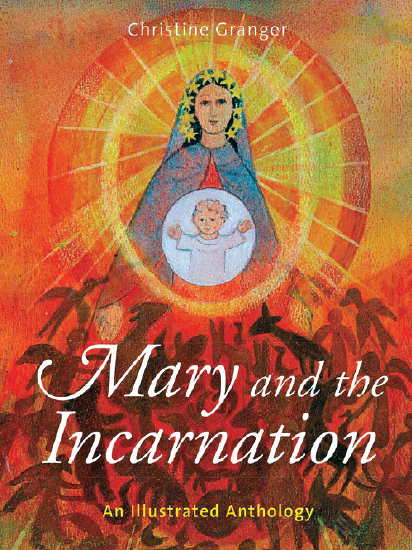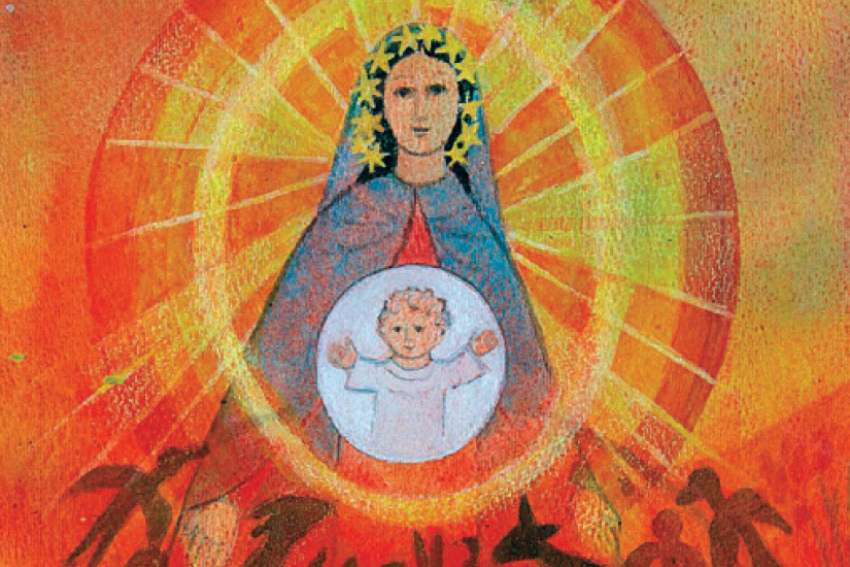 Mary and the Incarnation is a small devotional book based on a selection of illustrations by Ukrainian Canadian artist Christine Granger. It follows on from her two earlier volumes with similar Marian themes: Mary, Mother and Child (2006) and Mary, Mother of My Lord (1996).
Mary and the Incarnation is a small devotional book based on a selection of illustrations by Ukrainian Canadian artist Christine Granger. It follows on from her two earlier volumes with similar Marian themes: Mary, Mother and Child (2006) and Mary, Mother of My Lord (1996).
The colour reproductions are of Granger’s paintings in the Byzantine icon tradition and are accompanied by short excerpts from Scripture, various spiritual writers and prayer. It is quite a slim volume — only 80 pages — measuring 14 by 16 cms with 35 illustrations, but at $17.95 quite pricey for its weight and production values.
Devotional literature, in a broad sense, is something that we can read on our own, at home or anywhere, for prayer and meditation. Accompanying illustrations may help to draw us in to a meditative frame of mind or provide a focus for thoughts and prayers. The text may simply be Scripture passages (the Bible is a devotional book in this sense), poetry, meditative writings or extracts from other religious writings. In other words, it is food for spiritual thought.
At the bottom of the cover of Mary and the Incarnation are the words “An Illustrated Anthology,” which would seem to imply that the main purpose of the book is the collection of writings with the illustrations being of secondary importance. However, looking through Mary and the Incarnation it is Granger’s icons I am drawn to, rather than the text.
I wish the printing quality were better as the images are not as sharp as they could be, the colours appear faded and the strong and rich golds are quite dull and dark. The writing is not Granger’s own but texts by others — Thomas Merton, Edith Stein, Dorothy Day, Pope Francis to name a few — whom she has selected to go with the pictures. Granger has been painting Marian icons for decades and I am sure she has meditated and prayed many, many times about Mary so I would have been interested to read some of her own thoughts.
For example, one picture is entitled “The Holy Child” and shows an image of Jesus as a young boy surrounded by a myriad of animals crowding around Him and interwoven throughout the canvas with two angels hovering in the background. The colours are rich yellows, oranges, browns and greens. What was she thinking as she painted this? Why were the animals important and why are they everywhere? Why did she select the texts she did? Why are these writers important to her? Why is Mary important to her?
All these things would have given the reader even more to think about and contemplate. This also happens to be Granger’s third book on Mary, so what was the impetus behind it? How does it differ from the other two?
Granger was born in Ukraine and emigrated to Canada with her parents when she was a child. The icon tradition would have been part of her daily life when she was growing up. I picked up a quote from her from the Ukrainian Canadian Art Foundation / Kumf Gallery website.
“If I had a good voice I would sing in a Gospel choir and thus rejoice and share the good news of Christ our Lord,” she wrote. “I work in colour instead, bringing new techniques and ideas to a tradition as old as Christendom.”
It would be nice to hear her articulate more about this in conjunction with her art.
(Di Paolo is a Toronto freelance writer.)

